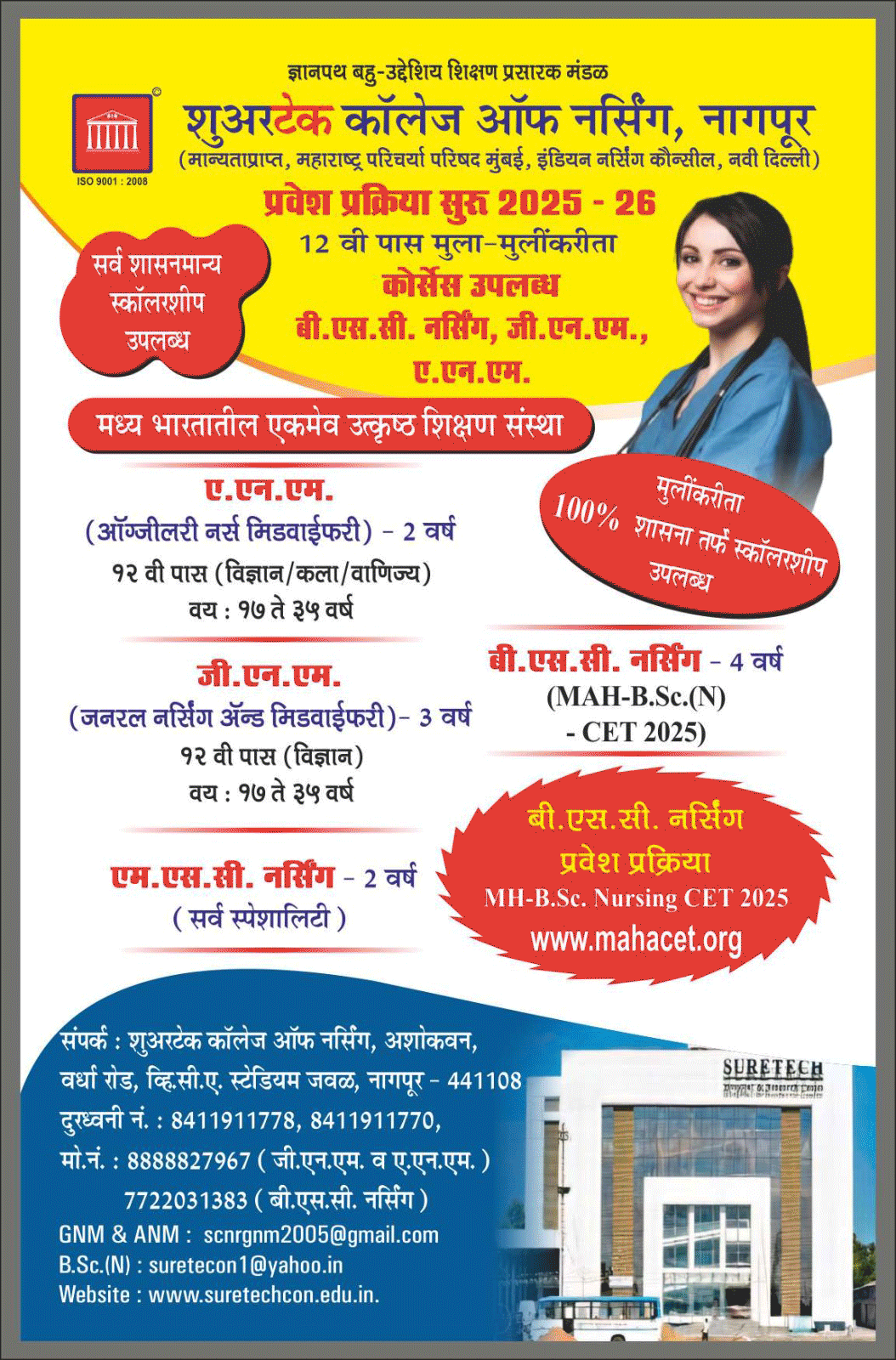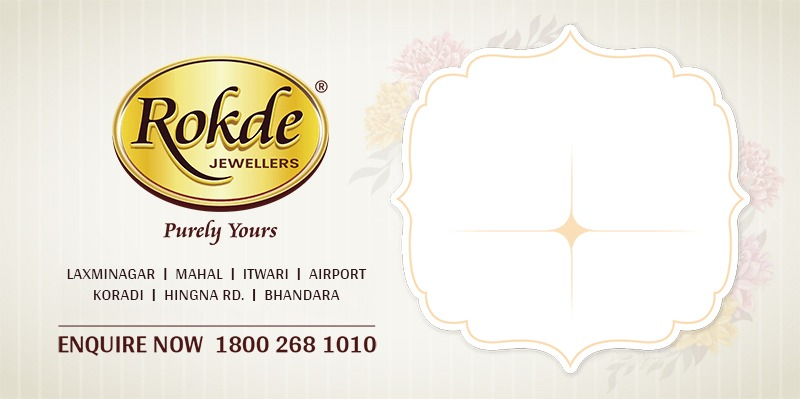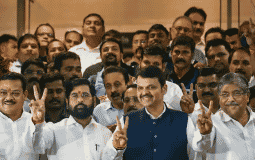Nagpur: If you discover that someone posted either photos or videos of you or your family on a social media site without your permission, the first thing to know is that it is illegal. Keep in mind that every platform has a different privacy policy, so the individual that posts may think they did nothing wrong.
However, if the images or videos belong to you, there are three ways that you can take control, including citing invasion of privacy, defamation, and a violation of right of publicity. Just like social media site policies, these three methods of recourse are unique. For help in navigating through them or to proceed with an actual lawsuit, contact a qualified attorney.
1. Invasion of Privacy – If the person who posted in a way that portrays you falsely or in an offensive manner, then you can take the appropriate action. For instance, if your local sheriff’s department has a “Ten Most Wanted” list and someone adds your photo to it, that would be an invasion of privacy. Another example is using your photograph to create a page on a pornographic website. Although taking a photo of you in a public setting is not an invasion of privacy, if the person captures you in your home and then uses it on social media without your consent, you have legal recourse. An attorney may classify this type of action as defamation as well.
2. Defamation – To prove defamation, the photo posted by someone else on a social media site would have to defame you. That means the image would harm your reputation or create a false impression of you. If an individual or company uses a photo or video that makes it appear you committed a crime when, in fact, you did not, and you or your business suffered as a result, that would fall into the category of defamation.
3. Right of Publicity – In this case, someone uses a photo of you for commercial purposes. In other words, if that individual posts your image to promote a product or service online or as an endorsement on a business site without your permission, he or she has violated your right of publicity. For this type of violation to occur, the public must be able to identify you in the photo used.
Because all the major social media sites, including Facebook, Twitter, and others collect data about their users all the time, a situation where your image or a video shows up can be somewhat confusing. By hiring an attorney who specializes in this issue, he or she can investigate and research to determine if you are in a position to take legal action.
If you find your image or a video posted that you did not authorize, you might try to reach out to the individual who posted it if you know who it is and demand they remove it. If that person refuses, you can then take a legal stance. For more information or you find yourself in this situation, never feel embarrassed about contacting a reputable attorney. Remember that this happens to people all too often, so you are not alone in the fight.
Article 19 of the Indian Constitution states that you are free to photograph other people for personal use in public places, but publishing a photo in a way that is “embarrassing, mentally traumatic,” or causes “a sense of insecurity about the activities the person in the photograph is involved in” is illegal under SECTION 67 of Information Technology Act ,According to this Section, anyone who uses electronic means to publish any picture, video or audio or anything which is capable of defaming a person morally will be considered as a crime and the person doing such an act will be punished with imprisonment.now The section penalises publication and transmission of obscene material, of material containing sexually explicit acts, and of material depicting children in sexually explicit acts in electronic form. The punishment can be up to 7 years along with fine that can be up to 10 lakh.
Provisions in the Indian Copyright Act 1957
Section 13 of the Indian Copyright Act, 1957 offers copyright protection for original artistic works. Section 2c of this act includes photographs under artistic work. Section 4 of the act prevents publishing the copyrighted work in the public without the license of the owner who has the copyright. The copyright owner can use the photograph in any way and even commercially. Section 17 of the Copyrights Act, 1957 conveys that the first owner of the copyright is the author of a work. The author, with respect to a photograph, is the person taking the photograph, or the artist unless there is an express agreement stating otherwise. This position derives from the WIPO convention of 1967, of which India is a signatory. There are, however, certain caveats associated with the general provision of Section 17 of the Indian Copyrights Act, 1957. As per Section 17 (a), when the work has been made by the author in the course of employment, the employer owns the copyright. Considering an example where a newspaper hires a photographer under a contract to procure his service, the newspaper, or the owner of the newspaper, will own the copyright for the photographs clicked by the photographer during the course of employment, in the absence of any agreement to the contrary. Section 17(b) of the act provides that “where a photograph is taken or a cinematograph film is made, for valuable consideration, in the absence of any agreement to the contrary will be the first owner of the copyright” The services of an independent contractor hired for creating or doing a work on a given subject fall under this definition. 4
In case of wedding photographs, the copyright of the wedding images belongs to whoever has paid the photographer to take the snaps, unless there is an express agreement assigning the copyright of the photographs to the photographer.
But if the photographer clicks some photographs which are outside the scope of the contract, the photographer will retain copyright for such pictures. For an example, let us consider that the agreement is to click 100 pictures, the copyright for these 100 photographs is for the person who paid for these photographs. If the photographer takes an additional 20 photographs, he retains copyright for these other photographs.
Section 52 of the Indian Copyright Act 1957 deals with fair use. This section lists out specific instances or conditions wherever the overall rule concerning copyright doesn’t apply. Section 52(1) (a) of the Indian Copyright Act, 1957 permits the employment of proprietary work for personal or personal use, together with analysis, criticism or review.
As per this exemption, the artist will maintain a private portfolio of the photographs he has taken for somebody else. This exemption doesn’t offer him any rights to take advantage of his portfolio commercially, or sell the pictures from the portfolio to any third-parties. Section 52
(h) of the Indian Copyright Act, 1957 exempts the publication of extracts restricted to 2 passages, however this is often specifically for revealed literary or dramatic works, and not applicable to images. Section 52
(d) of the Indian Copyright Act, 1957 permits the copy of any work for proceedings or maybe for the aim of a report of a proceeding. 5 So, if the marriage photograph may be a very important clue to a criminal offense scene, or later within the course of a divorce proceedings, it is often freely used and shared for the aim, without worrying of violation.
The issue of privacy
The right to privacy may be a natural right, enshrined as elementary rights by most legal jurisdictions of the globe. as an example, taking images while not consent is violation of Article 88 of European Convention of Human Rights (ECHR.) In India, the proper to privacy may be a elementary right, bonded below Article twenty one of the Constitution of India.6 varied courts have conjointly enshrined the proper to privacy below common law, principles of equity, and also the law of breach of confidence. Supported such natural and elementary rights, anyone during a personal place features a legal and cheap expectation of privacy, however such right isn’t absolute. Most legal jurisdictions don’t extent the proper of privacy to public places. Anyone during a public place, has no legal expectation of privacy
In Sonu Nigam v. Amrik Singh (alias Mika Singh), the parties to the case were to seem at the Mirchi Awards 2013, and were shown through images on the official posters of the event, with their due consent. Mika Singh, so as to push himself displayed hoardings and posters, that were completely different from official hoardings and posters of the event, carrying Brobdingnagian photos ofhimself beside smaller photos of the opposite artists, together with Sonu Nigam, while not their consent and permission. The metropolis tribunal restrained the litigators from displaying the photographs of the litigant while not consent and ordered the defendant to pay Rs. ten Lakhs as damages towards nominative charities, as consented by the parties.
These analogies have created it clear that the pictures taken at a private space, and that includes people who haven’t given their consent are often used just for the aim that it absolutely was taken.
Photographs used for Criminal Investigation
A good record should be processed properly and printed. It should be focussed, sharp and should not converge in the print. A photograph should include everything regarding the subject and needs to be relevant to its purpose. Photographs of crime scenes are examined with a detailed plan to show a true picture that is obtained. These should not be marked or retouched. They should be taken from eye level. For Example- traffic accident photographs, where views of other drivers play as an important factor. The police photographers keep in mind these requisites of a good record picture that will standardise the procedure and technique.
In presenting photographs to the court, the police photographer states on oath, date. Day and time on which he took the photographs and he processed the negatives himself. If this cannot be done, an affidavit is sworn by technician who processed the film and on status of photographer as witness to the ’truth’. He may be regarded as an expert witness and competent within his own field to express an opinion if asked by the court to do so. The court places a great deal of reliance on experience of witness. Legal photographs are made ultimately to be used in the courtroom.
There is a thin line between professional photography and perversion acts, but according to Law, the nature of photograph plays an important role in the major decision of registering a complaint.
So, if you are willing to upload any pictures of your EX, make sure that the same picture will not fall under the purview of above section. do not upload any sensitive pictures,use your senses or you’ll get in trouble.
– Adv Manjeet Kaur Matani















